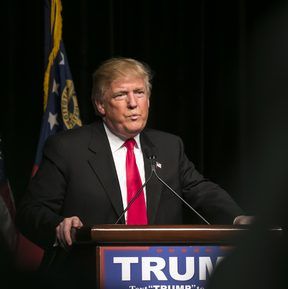California’s recreational cannabis industry could eventually generate between $4.5 billion and $5 billion in annual retail sales, making it by far the most attractive market for business opportunities of the states that legalized last week, according to estimates released Wednesday.
Marijuana Business Daily’s editorial director, Chris Walsh, revealed the projection during his speech at the Marijuana Business Conference & Expo in Las Vegas.
He also offered up estimates for the other seven states that passed cannabis measures on Election Day.
Marijuana Business Daily previously announced that all new markets the election paved the way for could post a combined $7 billion-$8 billion in retail sales down the road, but the publication hadn’t released a breakdown until today.
The California estimates offer a look at just how big the state’s marijuana industry could become once the market hits its stride. If the estimates hold true, California’s recreational marijuana shops would bring in more than the entire industry is expected to generate in retail sales this year.
Below are annual retail sales estimates for the other seven states that passed marijuana measures on Election Day:
- Maine’s recreational industry could bring in $250 million-$350 million in sales if the measure is enacted into law (the initiative passed by a slim margin and a recount is possible).
- Massachusetts’ recreational market could generate sales of $650 million-$750 million, fueled in part by tourists coming from other states in the Northeast.
- Nevada’s recreational marijuana could record sales of $450 million-$550 million, with tourist spending accounting for the bulk of it.
- Florida’s medical marijuana market could become one of the largest in the nation, hitting sales in the $600 million-$800 million range. The state’s large population and heavy concentration of seniors will contribute to those figures.
- Arkansas is expected to generate $30 million-$60 million in sales via dispensaries, ranking it as a small – but not tiny – market.
- North Dakota will be one of the smallest medical marijuana markets in the country, with estimated annual sales of $10 million-$20 million.
- Montana’s medical marijuana industry will be resurrected after voters passed a measure to allow regulated MMJ businesses, leading to an estimated $25 million-$35 million in annual dispensary revenues.
“The 2016 election will go down as one of the most defining moments in the history of the marijuana industry and movement,” Walsh said. “This is going to pave the way for billions of dollars in new sales, thousands of business opportunities, potentially several hundred thousand jobs and a wave of innovation in the marijuana industry over the next five years.”
The projections are for sales three to five years after the first dispensaries or rec shops open, and they do not include current retail revenues in states that currently have a medical marijuana industry.
The estimates for each state take into account many different factors, including the medical conditions list (for states that legalized MMJ); population numbers; the cost of living; average patient/consumer spend; whether home cultivation is allowed; the acceptance of cannabis in the state; what’s known of a particular state’s laws, rules and regulations at this point; comparable markets with solid data, and Marijuana Business Daily’s extensive research on the industry over the years.
The publication has been providing these types of estimates – based on thorough research in this industry – since 2013 via its annual Marijuana Business Factbook.
Walsh stressed that these are preliminary estimates.
There are still a lot of unknowns in each state in terms of how the markets will develop, how many business opportunities will be and when the industries will come online. Additionally, the election of Donald Trump as president introduces a hefty dose of uncertainty for the industry, so these numbers could change depending on who the federal government approaches marijuana.
“We will revise these estimates over time as we get a better picture of how the programs are going to materialize,” Walsh said.




